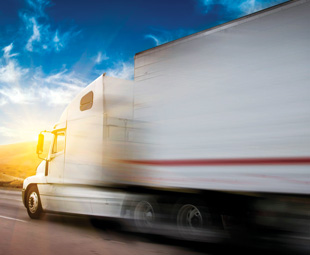Don’t take an overloaded chance

Most people associate road safety with the most popular topics: obeying the speed limit, wearing a seatbelt and not driving under the influence of alcohol. Although these factors are certainly critical to ensuring safety on our roads, another crucial element is to avoid overloading, says Trans African Concessions (TRAC).
Between 20 and 30 percent of all heavy vehicles travelling on South African roads are overloaded. These are scary statistics given that overloaded vehicles pose a great risk to fellow road users and truck drivers themselves, and damage road infrastructure. It has been found that, while all legally loaded heavy vehicles damage the road pavements to some extent, overloaded heavy vehicles cause extensive damage.
In addition, overloaded vehicles pose a danger to the drivers of these vehicles themselves, as they can considerably impair the driver’s ability to brake and steer correctly. This is aggravated by steep downhill slopes and sharp curves. An overloaded truck is, therefore, an accident waiting to happen that may result in loss of life, for which there is no price tag.
In relation to infrastructure damage, overloaded vehicles are responsible for approximately 60 percent of the damage to the road network, which, according to the Council for Scientific and Industrial Research (CSIR), represents approximately R 1billion per annum. It therefore goes without saying that overloading also has severe negative effects on the economy.
TRAC N4 and overloading
Although TRAC has no law enforcement rights, it manages load control centres (weighbridges) and a further two weighbridges in Mozambique, where traffic officers are able to perform their law enforcement role. In Mpumalanga, there are 120 dedicated traffic officers working on this project on a full-time basis.
Since the introduction of these load control centres on the N4, more than three million vehicles have been weighed and overloading has been significantly reduced. Currently, only nine percent of the average daily heavy-vehicle traffic is overloaded and less than two percent of this traffic is illegally overloaded.
With the cooperation of several national, provincial and local government departments, the South African National Roads Agency (SANRAL), the concessionaires and the freight industry, meaningful progress has been made in combating overloading of heavy vehicles. TRAC also appreciates the commitment of heavy vehicle operators to curb overloading.
Overloading facts
• Overloaded vehicles cause damage to the road surface.
• Damage to roads as a result of overloading leads to higher maintenance and repair costs and shortens the life of a road, which, in turn, places an additional burden on the state as well as law-abiding road users, who ultimately carry these costs.
• Overloaded vehicles are dangerous as they require longer distances to brake before coming to a stop. They generate high centrifugal forces in corners, and shifting loads or loss of tyre grip becomes an instant safety risk. Overloaded vehicles have a reduced tyre life, an increased risk of blow-outs and reduce the driver’s control over the vehicle, escalating the chances of an accident.
• As overloading is illegal, should an accident or incident occur, cover could be void.
How to prevent overloading
• Ensure you know both the permitted axle weight and the gross vehicle weight.
• Road Traffic Regulation 245 requires that all buses, minibuses, goods vehicles and truck tractors display certain prescribed information, clearly imprinted or stamped on a metal plate affixed in an accessible position.
• Ensure loads are evenly distributed and secured in place so as to avoid loads shifting and overloading an axle. Check the load every time you stop to ensure it has not shifted or moved.
• Ensure all vehicles are weighed before and after loading, if you have an in-house static or mobile weighbridge
Published by
Focus on Transport
focusmagsa




